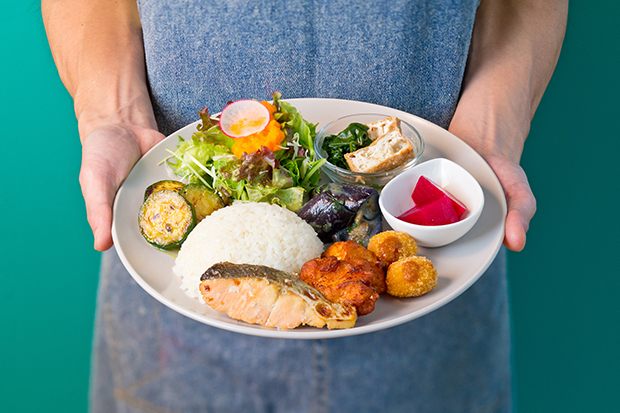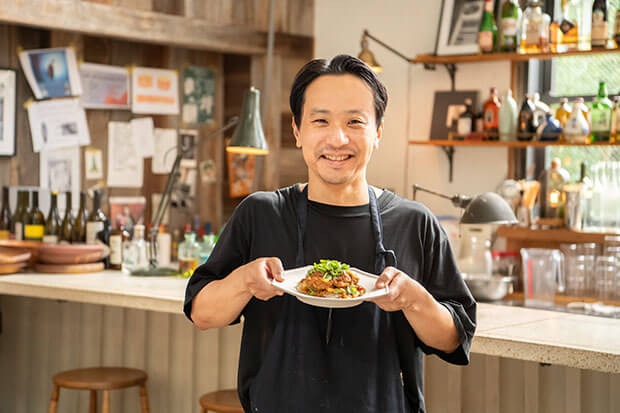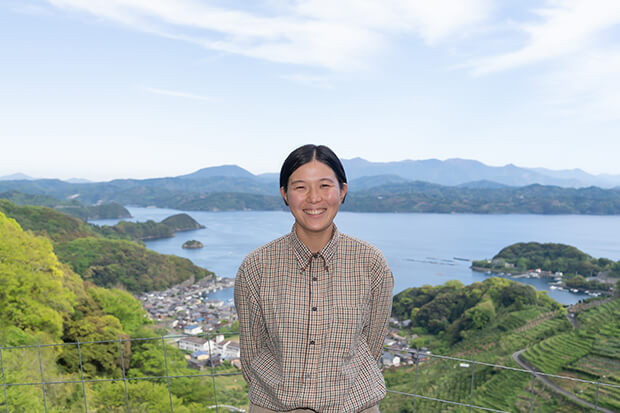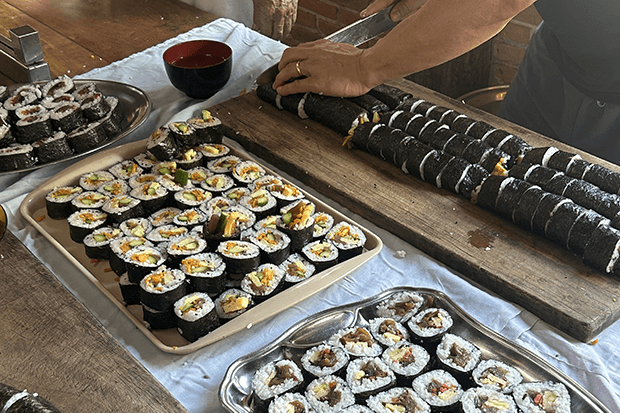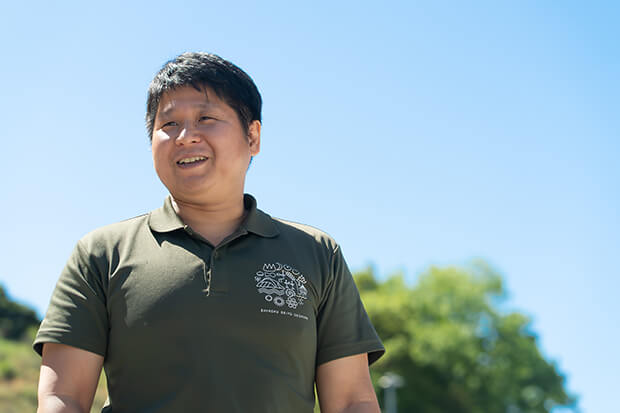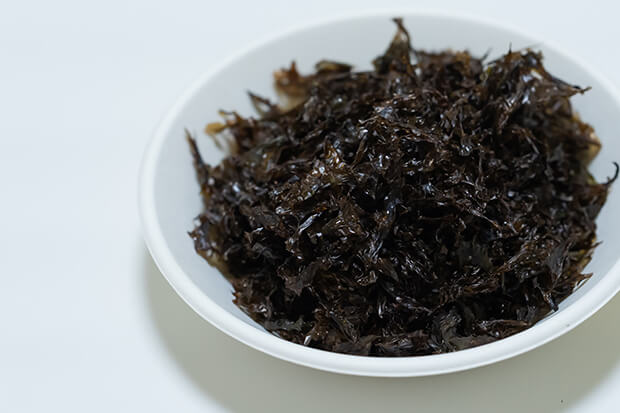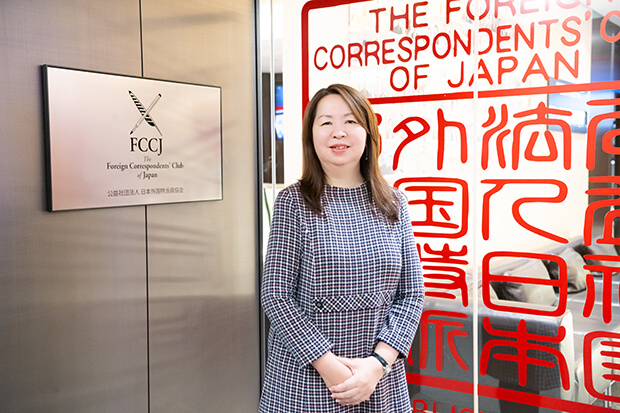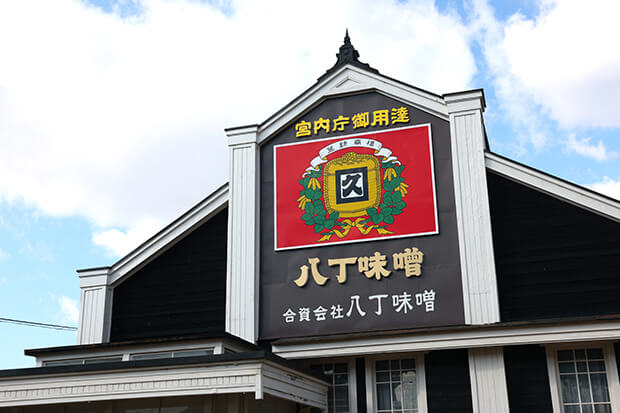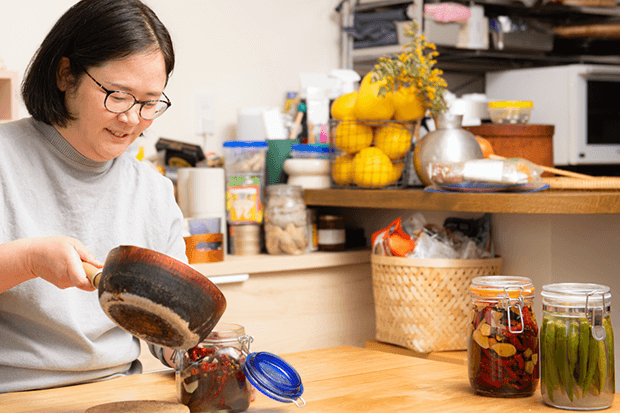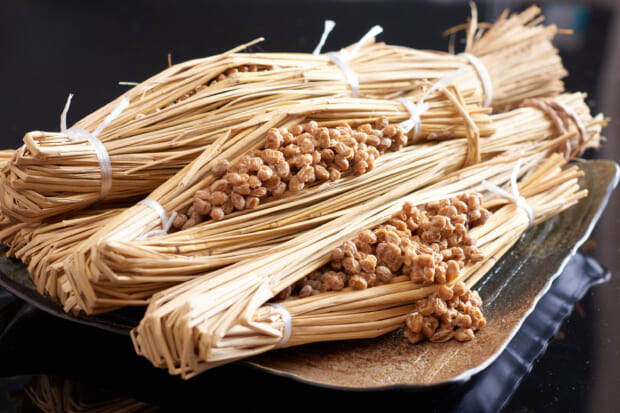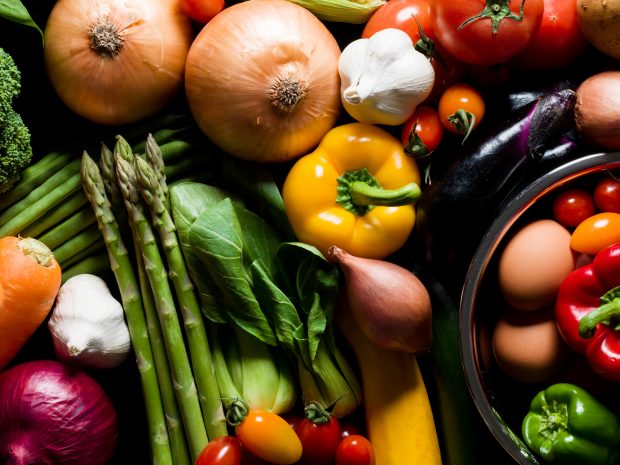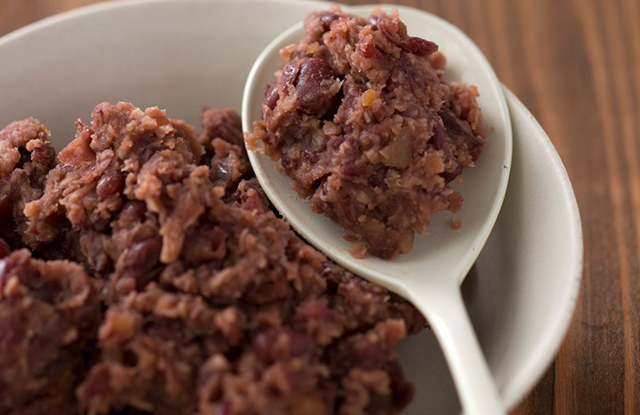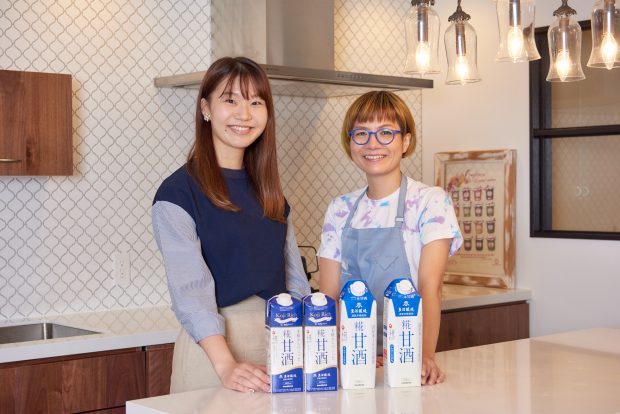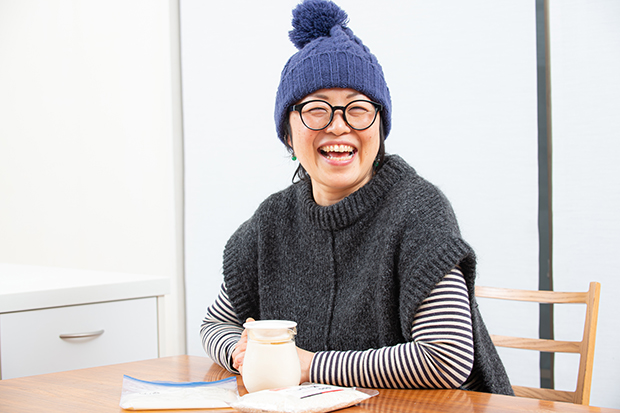Breakfast in Japan: A VIP-Approved Morning Tradition in Kyoto
Dec 20,2012
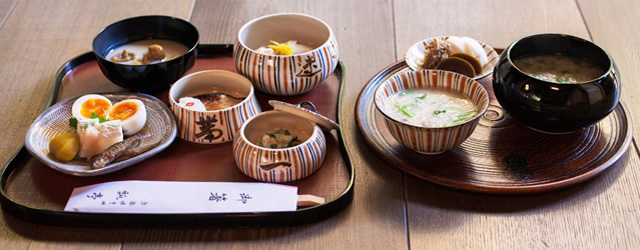
Find a breakfast Japan can be proud of here –Hyotei, Kyoto–
Tucked away in laneway near Nanzen-ji Temple in Kyoto’s Higashiyama district, Hyotei is an illustrious ryotei, or traditional Japanese restaurant, with a 400-year history. It is said to be the pinnacle of Kyoto kaiseki cuisine, Japan’s haute cuisine that made up of many small courses. While it has many signature dishes, the Hyotei Morning Porridge, which is served only in the morning, is a traditional gastronomic delight that has been carefully preserved for a century and a half, from 1868, the first year of the Meiji period, until today.
This dish, which liberally uses ingredients found only in Kyoto and brims with the spirit of hospitality, is a world-class breakfast that Japan can be proud of. Let’s savor it together.

In Kyoto, breakfast means rice porridge
Waxing nostalgic for an eternal history
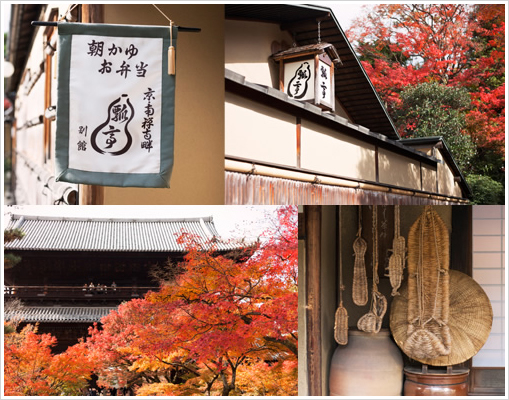
You will find Hyotei nestled along the road approaching Kyoto’s Nanzen-ji (established 1291), the most prestigious of all the Zen temples. It started life as a road-side tea house in the Edo period in these lands surrounded by pine trees. Situated on the back road of the Tokaido (Edo-Kyoto highway) as it was, it is easy to imagine travelers on their way to Kyoto using the spot to change their traveling clothes and don new straw sandals.
Whispers of such scenes can still be seen in Hyotei’s entranceway, where a folding stool stands and old straw sandals are left airing. Who knows how many travelers sat on that stool and what thoughts they had as they retied their straw sandals.
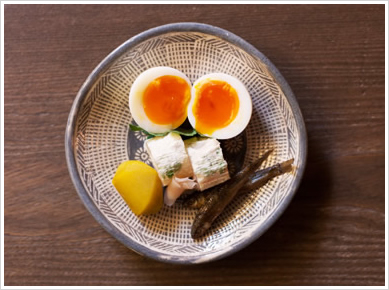
The famous Hyotei Egg was born in the Edo period (1603–1868). Initially a tea house, Hyotei also served meals. The egg came about when Hyotei boiled and served eggs laid by chickens kept in its gardens. At the time, eggs were precious, and eating them boiled was extremely rare. So rare, in fact, that boiled eggs were mentioned in literature as being “round in shape, without any bones.”
The name “Hyotei Egg” became widely known, and Hyotei put up its shingle as a ryotei in 1837, the eighth year of the Tempo period. From then until today, Hyotei has built up a storied history as a restaurant serving the finest kaiseki cuisine beloved of all manner of executives, from the wealthy masters of Kyoto to the politicians, literati, tea ceremony masters and business leaders of the day.

“Nonchalance” is the greatest luxury
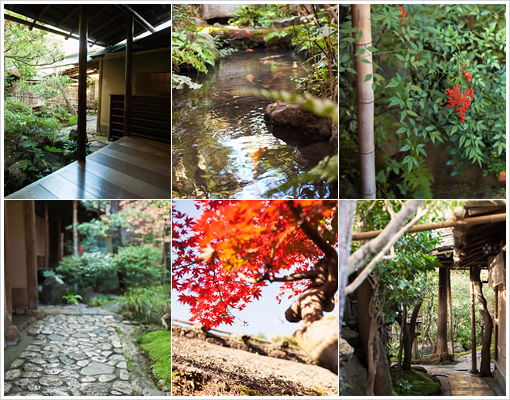
Take one step into the gardens beyond the entranceway and you will experience an odd sensation, as if you’ve been transported back in time. In this space, an altogether different time passes from that of the busy outside world. The gardens, which really feel like they have been carefully tended for their 400 years, softly envelop rather than divide its visitors.
Hyotei’s main area is comprised of four buildings scattered around the gardens. Each is an individual tea room, where a quiet and relaxing time can be spent in any of the separate formal Japanese rooms . Even before you take a single bite, your spirits rise naturally as you contemplate how glad you are to have come to such a splendid place.
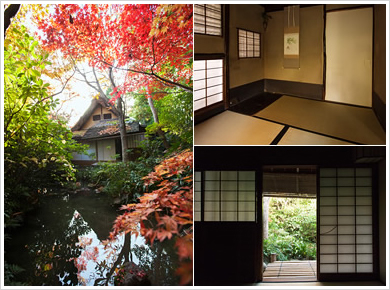
Resplendent with its thatched roof, Kuzuya, a Nijo-Daime four-and-a-half-mat tea room, is the oldest of the buildings remaining from the time of Hyotei’s inception. The small pond in the front contains water drawn from Lake Biwa. No doubt this rich clean water is the reason the plants in the gardens look so lively.
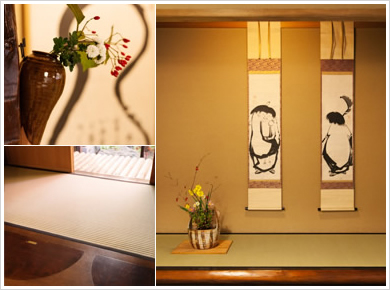
The hanging scrolls displayed in the separate room were Hanzan and Jittoku by Ito Jakuchu. The flower basket was a Rosanjin. Rare antiques are displayed nonchalantly in every building.
Arranging the flowers is the task of Takahashi Eiichi, the 14th generation master of Hyotei. Apparently he selects and arranges flowers of the season from among the nearly 200 varieties growing in his own garden.
Morning porridge: An accidental invention
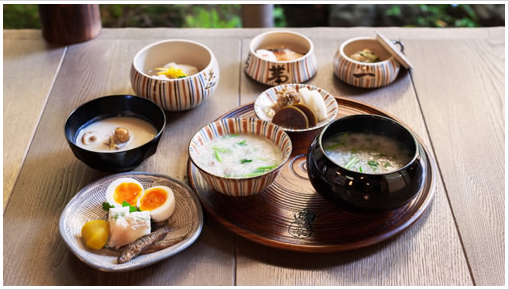
With apologies for the delay, here we have Hyotei’s famous Morning Porridge. It came about long ago when a wealthy master appeared at 5 am one summer’s morning, with geisha in tow, after a night carousing in Gion. Awoken from his slumbers by the demand for something to eat, Hyotei’s master put together various ingredients at hand and Morning Porridge was born. In other words, it was the result of responding to a customer’s selfish request. Sometimes great things happen when you least expect it.
The famous Hyotei Egg in a hassun dish, a trio of stacking bowls in Hyotei’s trademark gourd shape, a soup bowl and rice porridge. In a moment, eating a menu of hot rice porridge topped with hot kudzu sauce in the heat of summer became a hit, and Hyotei began selling its signature “Morning Porridge” at the start of the Meiji period (1868–1912).
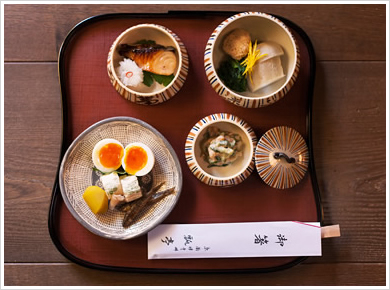
The hassun dish always contains a Hyotei Egg. Its soft-boiled yolk has a rich viscosity, but it could not be milder in taste. The accompanying morsels in the hassun dish change seasonally, but on this day include sea bream kosode sushi and sweetened boiled gudgeon.
The topmost of the three stacking bowls contains cucumber and persimmon in sesame dressing. The middle contains the season’s grilled Spanish mackerel, and the bottom delicacies cooked separately but served together. In this case they include a stickily rich simmered shrimp and yam dish and Kyoto chrysanthemum greens drenched in mild dashi stock. The menu might change with the produce of the season, but the seasoning is stronger in the winter months than in the summer, and care is taken to ensure the food is warming.
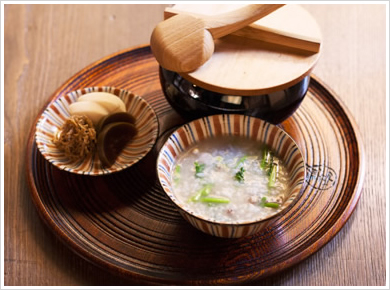
The hassun dish always contains a Hyotei Egg. Its soft-boiled yolk has a rich viscosity, but beyond that, the previously mentioned kudzu sauce-topped white rice porridge is served in summer, and in the coldest months the above is served.
Once-steamed rice is simmered in a stock made from quail bones and vegetables along with finely chopped quail meat to make a rice porridge. Once cooked this second time, it is topped with Japanese parsley, the aroma of which is a beautiful match for the quail.
This Quail Porridge, which was first served shortly after WWII, has now become Hyotei’s signature winter dish. The rich white miso soup, containing nameko mushrooms and rikyu-fu wheat gluten, was slightly spicy with chili pepper.
The 15th-generation young master’s passion reaches the world
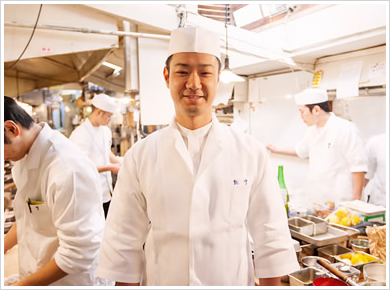
Takahashi Yoshihiro, the 15th-generation master who will carry 400 years of tradition forward, was born in 1974. While it was normal to enter the culinary world straight from junior high school until the not-so-distant past, thinking that it would be important in the future to study something other than the culinary arts, including interpersonal relationships, Takahashi graduated from university with a major in business administration. After training at ryotei Tsurutei in Kanazawa, he returned to Hyotei aged 25.
“We have many guests from overseas and I believe we are now in a global age. I want to absorb knowledge from various cuisines of the world and, rather than stiffly preserving tradition, I want to be able to offer food befitting the age,” he says, showing great flexibility and passion.
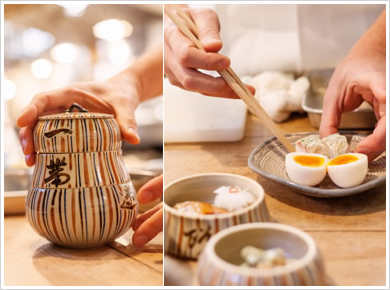
Cooking is difficult. The flavor even of a simple cold dish served with dressing can change depending not only on the condition of the ingredients and the seasoning, but also how the vegetables are cut, squeezed out or arranged on the dish. “I believe the culinary arts are something you learn little by little, day after day,” says Yoshihiro-san.
The characters written on the three stacking bowls are a verse from a famous poem written by Japanese Confucianist philosopher and poet Rai San’yo. They mean: “Going along the approach to Nanzen-ji Temple through the pine forest, you will never be lost.”
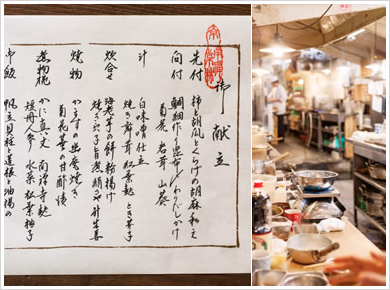
The calligraphy on the kaiseki menu is the handiwork of the elder Eiichi-san. “My brushwork is not yet at this level,” says Yoshihiro-san humbly, but he never misses practicing and studying the tea ceremony. He has a lot to learn beyond the culinary: from the names of the flowers and the history of the bowls and vessels, to the meanings of the hanging scrolls. The weight of tradition is substantial, after all.
In a bright, breezy kitchen, food destined to bring oohs and aahs of admiration from the lips of VIPs of the world is ready to be served.














